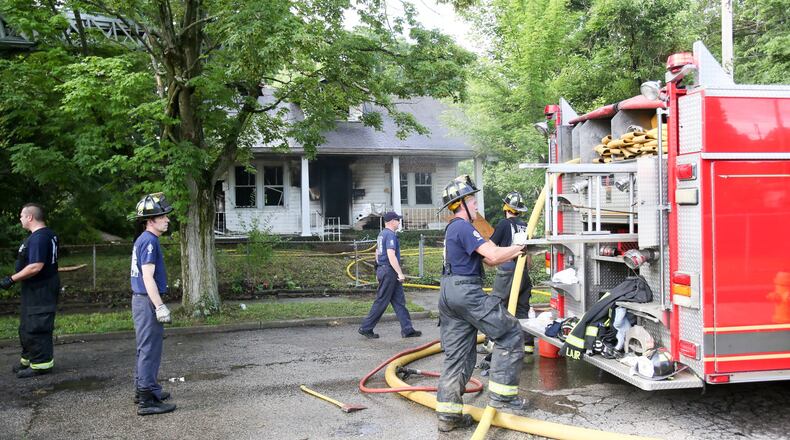City officials said a variety of factors are driving the lower building-fire rates — including demolition of vacant buildings that are more susceptible to arson or accidental fires — and possibly even fire-prevention lessons firefighters give to Hamilton students.
Through Oct. 4 2015, the city had 51 building fires, with 52 as of the same date in 2016. As of Oct. 4 this year, the corresponding number was 11.5 percent lower than in 2016, said Hamilton Deputy Fire Chief Mark Mercer.
The city in both 2015 and 2016 had 67 building fires. At the current rate of fires, which do not include fires in grass, cars or trash, the city is on pace to have 61 blazes this year.
Hamilton Deputy Fire Chief Lawrence Gassert recently discovered a strong correlation between razing of vacant buildings this decade in the city and a drop in structure fires. He did the research for his bachelor’s degree in fire administration.
The strategy of razing building has some controversy: Some residents complain the homes could have been spared to provide affordable housing, and the gaps left by the demolished buildings leave empty lots. Proponents argue the removal of blighted buildings provide relief for residents trying to keep up the quality of their neighborhoods.
For the emergency medical runs — instances where paramedics were called for a medical issue, or discovered one at a scene — “I wish I had a good answer for why,” Mercer said, although drug abuse and increases of chronic diseases such as diabetes seem to be leading drivers.
“We feel like some of the stuff seems apparent, but it’s one of those things that you just don’t know if it is or not,” Mercer said. “We haven’t been able to look closely enough to say what is the real reason for the change.”
For the drug abuse and diseases, “We know that we have seen an increase in our pharmacy costs,” including oxygen, heart-attack drugs and Narcan, which is used to revive people who have experienced overdoses from heroin and other opioids, he said.
Here’s another reason Mercer said building fires may be down, although it’s hard to pinpoint: “On the structure-fire side, in the past few years, we’ve focused very intently on getting to the grade schools with fire-prevention education, and doing community events through the safety nights that we do uptown, Alive After 5, we do have people there to do fire-safety education, safety awareness, to get the children involved and learn what we do.”
The fire crews also have been very active in enforcing fire codes, Mercer said.
About the Author
